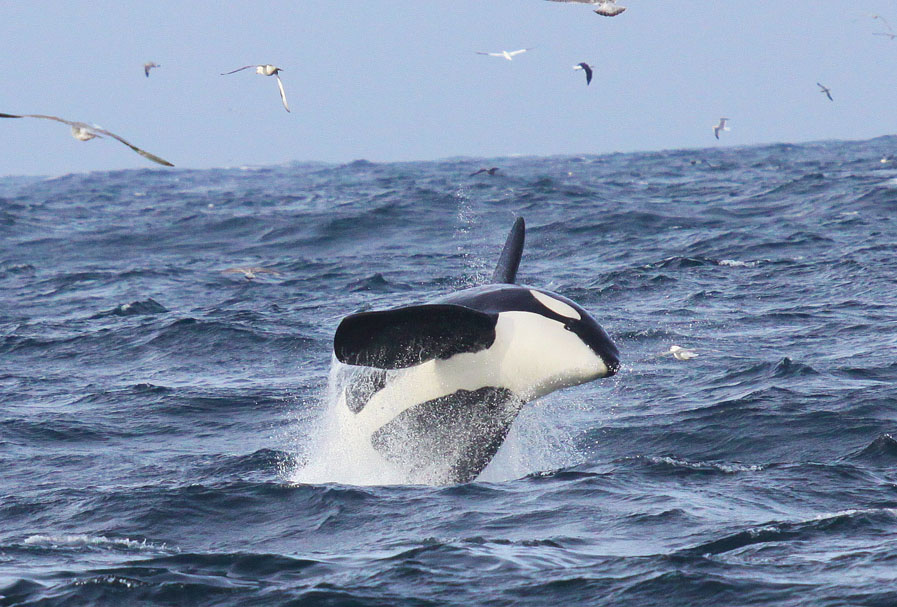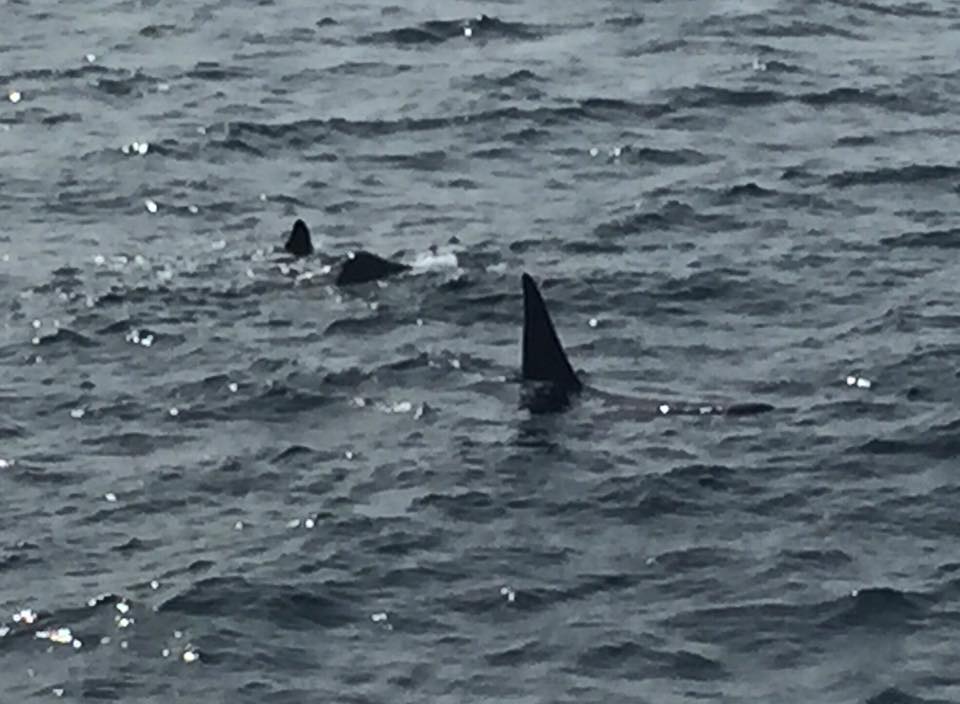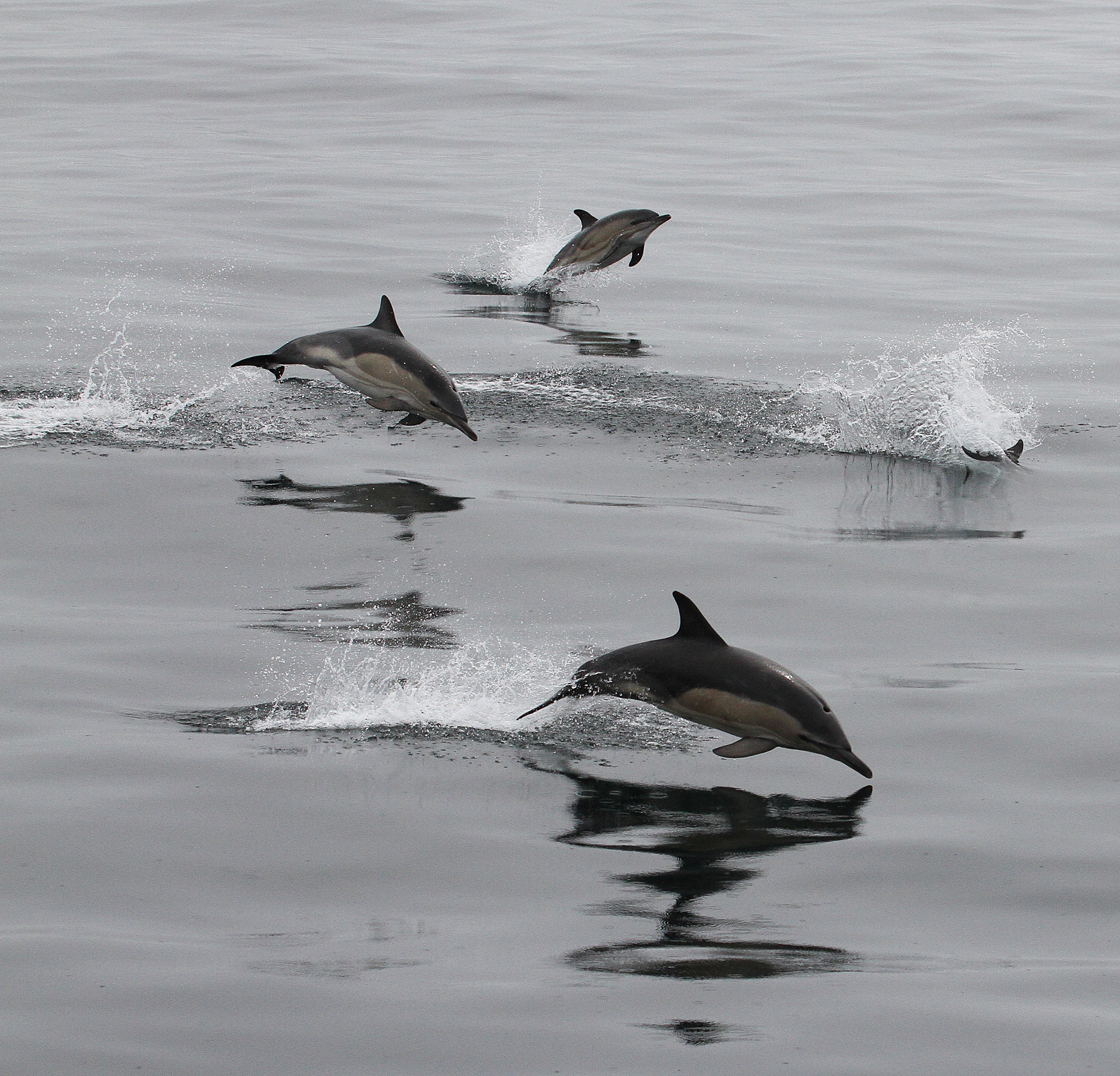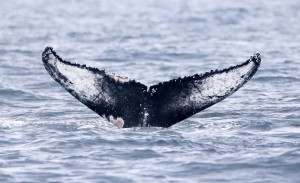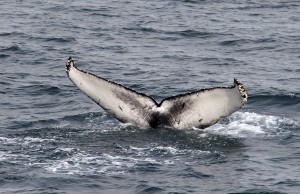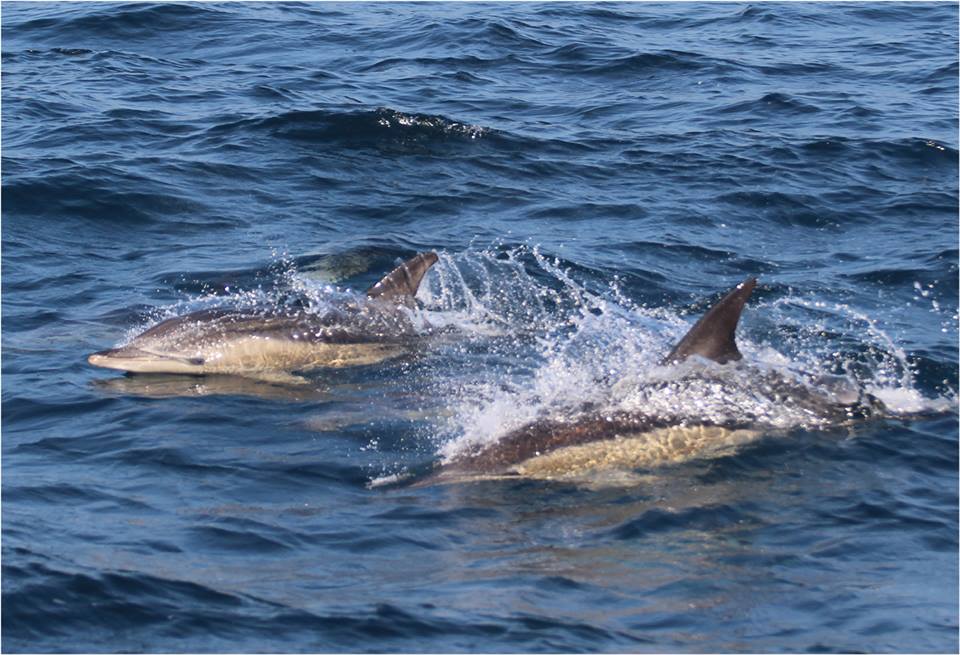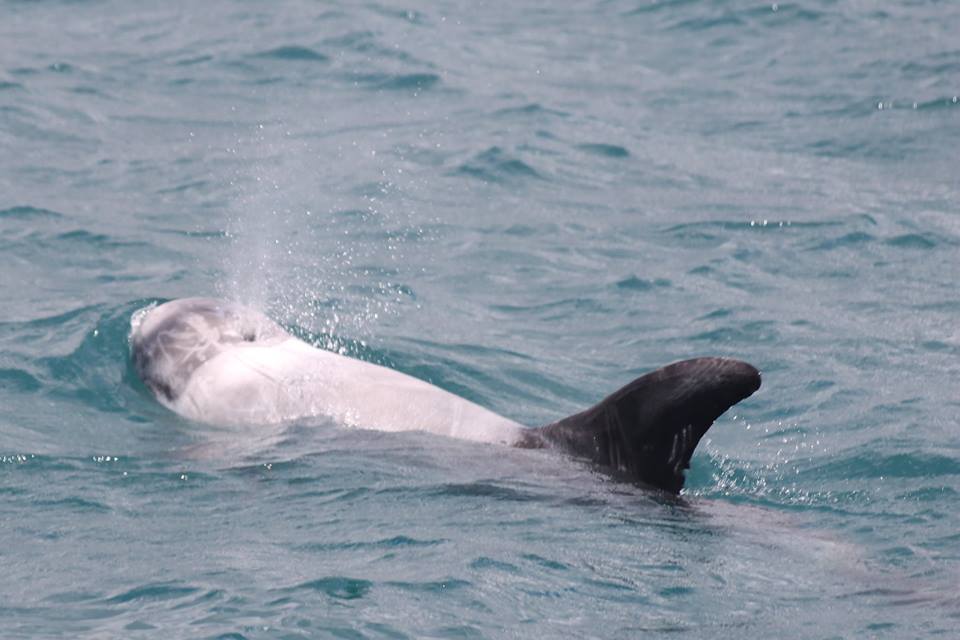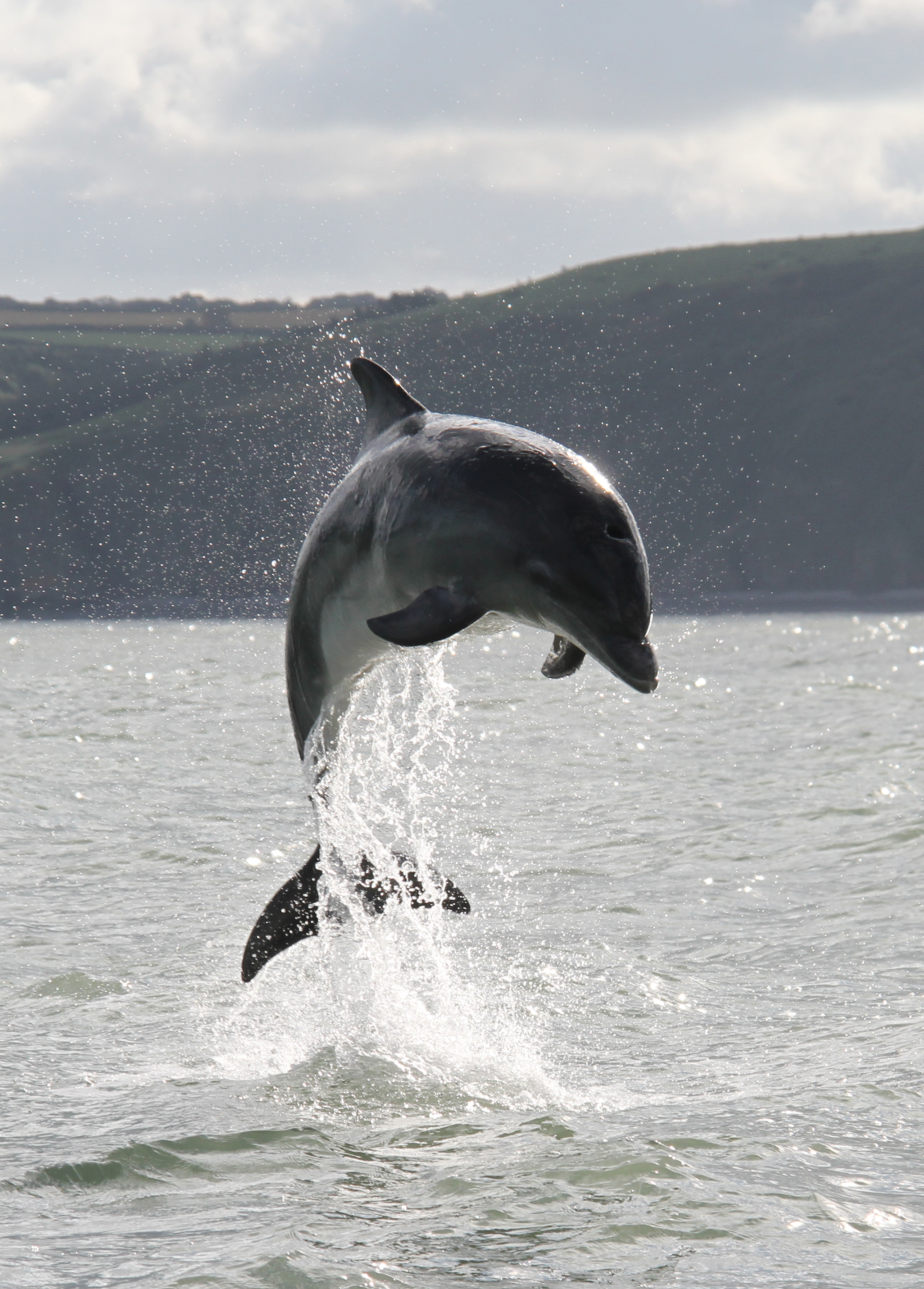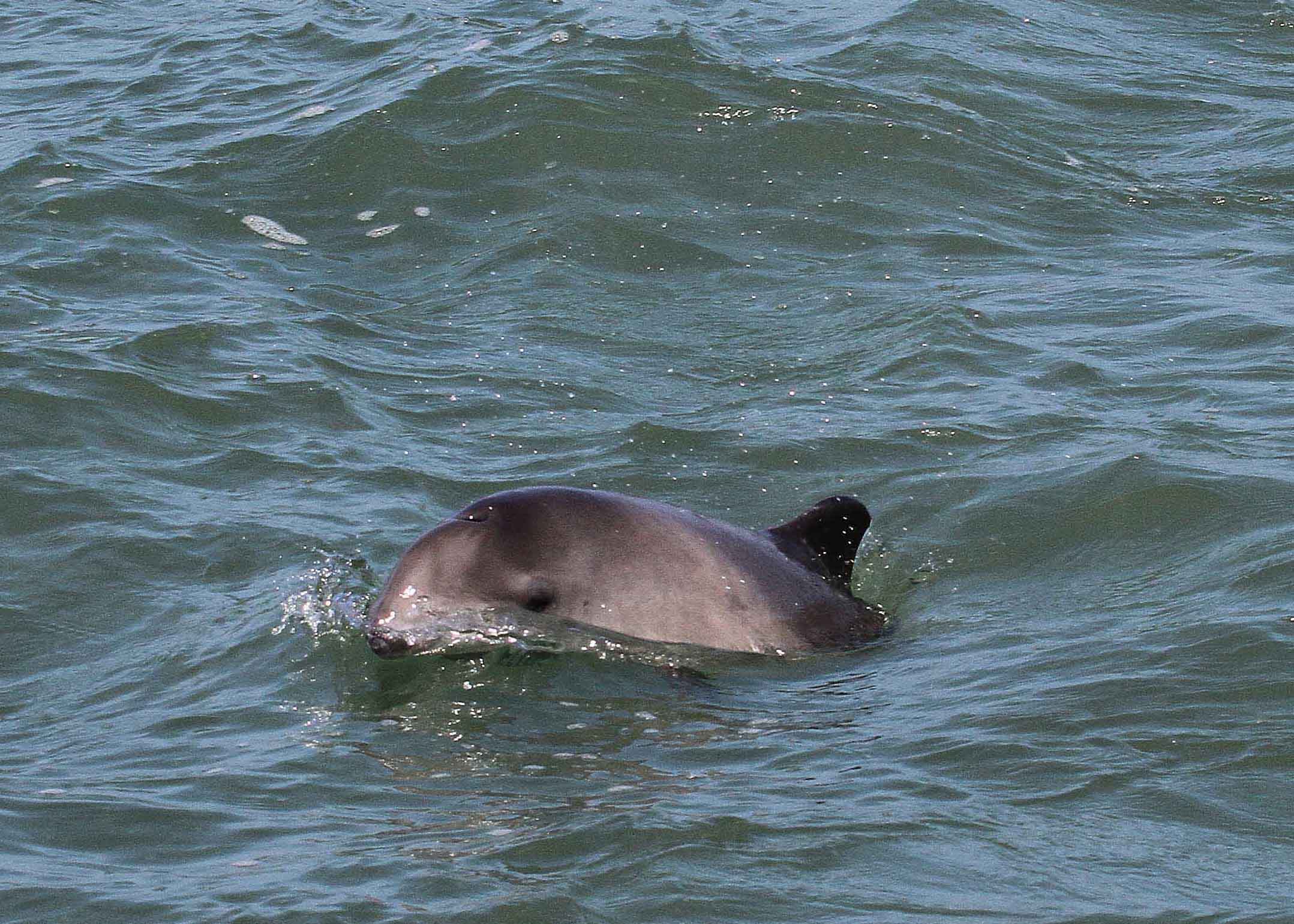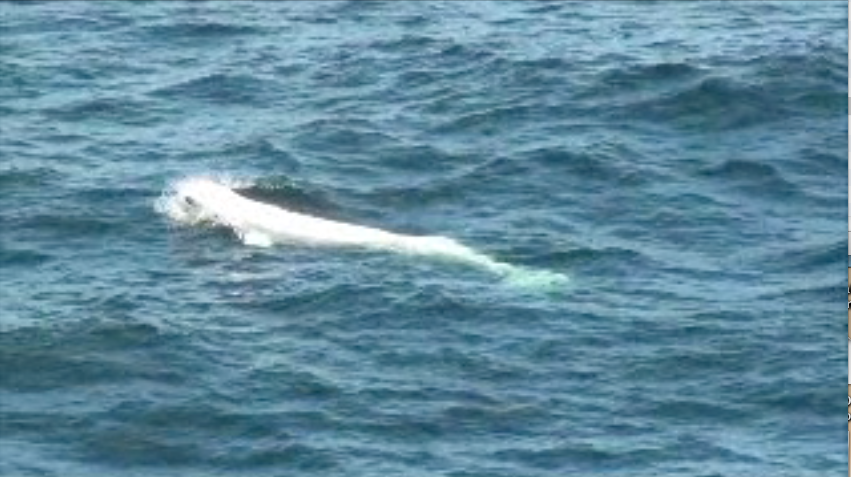The National Whale and Dolphin Watch, involving more than a thousand volunteers from all around the British Isles, conducted between 25th July and 2nd August, has revealed striking trends in the status and distribution of Britain’s Whales and Dolphins. Organised by the Sea Watch Foundation, Britain’s oldest marine mammal research charity, and with funding support from the BG Group, preliminary analyses have provided some very interesting results.
The aim of the survey was to obtain a snapshot picture of the status and distribution of some of the 29 species of cetaceans (whales, dolphins and porpoises) recorded in UK waters. Systematic watches from both land and sea were undertaken at locations all around our coasts and inshore waters from Shetland in the north to the Isles of Scilly and Channel Islands in the south. Over just this one-week period, around six hundred sightings of eleven different species were reported, and more records are still coming in. Already, however, some patterns are emerging, and a regional summary is given below.
Breaching UK killer whale taken by voluntary observer John Irvine/ Sea Watch Foundation
UK waters are some of the richest for whales, dolphins and porpoises in the whole of Europe and scientists at Sea Watch Foundation with help from members of the public, various wildlife organisations and boat operators monitor their populations with a UK-wide sightings scheme, the largest citizen science project of its kind.
“Residents of the UK can be delighted that the seas around us are so rich in marine wildlife, and heading to our shores to spot whales and dolphins is surely one of the most satisfying wildlife experiences offered anywhere on the planet” says Sea Watch Foundation’s Sightings Officer, Kathy James. “Despite often inclement weather, the National Whale and Dolphin Watch has produced a large crop of sightings and some striking results”, continues Kathy.
This summer has seen a good number of humpback whale sightings all around the UK, with individuals popping up in Liverpool Bay and both ends of the English Channel, as well as off Norfolk, eastern, northern and western Scotland, and southern Ireland too. There was a humpback whale sighting during the watch, in the Mull of Kintyre, SW Scotland.
However, the most extraordinary sighting from this year’s Watch week was surely the beluga whale filmed off Northern Ireland. Usually an arctic species inhabiting the Barents Sea and waters around Greenland, the beluga whale was spotted over a couple of days just off the shores of County Antrim. It is thought that this may be a consequence of unseasonably low sea temperatures in the north-eastern North Atlantic. This year also saw the addition of the UK’s 29th cetacean species, the bowhead whale. This normally high arctic species was photographed off the Isles of Scilly back in February.
Minkes were the most frequently sighted whale, with reports coming in from Shetland and Orkney down to Arbroath and Whitby on the east coast, across to Cornwall and the Isle of Man with many sightings further north off the west coast of Scotland.
A huge fin whale was reported off Whitby by a survey team from fellow conservation group, Orca. And killer whales were seen on eight occasions in Scotland, from Islay in the Inner Hebrides up to Orkney in the Northern Isles.
Large congregations of short-beaked common dolphins were seen in groups of 25-100 off the west coast of Britain from Cornwall through Pembrokeshire to northern Scotland, and further east in the English Channel a group was spotted off Sark in the Channel Islands.
Bottlenose dolphins were widespread. Besides the main concentrations around the well-known spots of Cardigan Bay, West Wales and the Moray Firth, East Scotland, they were seen regularly in Aberdeenshire and Fife down the east coast to Yorkshire. This extension of the range of the east coast population appears to be a relatively recent phenomenon, but it occurs not only southwards but northwards too, with a sighting off the Caithness coast. Other small groups of bottlenose were seen in the Inner Hebrides and around SW England in Cornwall, Devon and Dorset.
White-beaked dolphins put in a number of appearances in the North Sea, off the coasts of northeast England and southeast Scotland. Risso’s dolphins were patchily but widely distributed along our western seaboard with sightings reported off north Scotland, the Hebrides, Isle of Man, West Wales, and Cornwall. The most unusual dolphin sighting was that of a striped dolphin in a north Cornwall river estuary. Unfortunately the young animal stranded soon after it was spotted.
The one species that observers can expect to see all around the UK is the diminutive harbour porpoise. At just 1.5 metres long, this is our smallest cetacean and indeed was seen around most of the British Isles, from south Devon and Cornwall all the way up the west coast to the Northern Isles of Scotland, and down the east coast as far as Suffolk. Only the southeast corner of England lacked sightings.
Although the snapshot survey of Britain’s cetaceans is over for this year, monitoring of the populations continues and members of the public are urged to get involved throughout the year by reporting their sightings on the Sea Watch Foundation website or by talking to the team about starting dedicated watches from their local patch. Interested parties should visit www.seawatchfoundation.org.uk/become-a-sea-watch-observer/.
“Despite the weather, this year’s National Whale and Dolphin Watch showed us what an incredible wealth of cetaceans we can see from our beautiful UK coastline. Using the data provided to us by volunteer observers up, down and across our nations we’ll continue to monitor and protect their habitats well into the future”, ends Kathy.
Regional Summaries
Scotland: The Northern Isles of Shetland and Orkney remains the stronghold for killer whales in the UK, and during the National Whale and Dolphin Watch, pods of up to five animals were seen regularly at various locations around Orkney. In Shetland, white-beaked dolphins have become much scarcer in recent years, so it was not surprising none was seen there then. Harbour porpoises, once more abundant here than almost anywhere in the British Isles, have also become scarce in Shetland and there were only a few sightings, On the other hand, it was rather more common in Orkney and the Pentland Firth.
The greatest variety of species occurred off the north coast of mainland Scotland. Sizeable schools of common dolphins were seen, highlighting their recent northward spread into high latitudes and across to the North Sea. Bottlenose dolphins, very well known in the Moray Firth and off the Grampian and Fife coasts, but unusual off the north Caithness coast, were recorded there this time. And other species seen included minke whales, Risso’s dolphins, and harbour porpoises.
The bottlenose dolphin is the most commonly sighted species in the Moray Firth, but particularly in the outer firth southwards as far as Angus and Fife, minke whales and harbour porpoise were regularly seen. And white-beaked dolphins put in an appearance at Collieston in Aberdeenshire.
Killer whales photographed off Hoxa Head, Orkney, during the National Whale & Dolphin Watch by Colin Taylor/ Sea Watch Foundation
Over on the West Coast, harbour porpoises were seen at widespread locations. This is currently one of the strongholds of the species in Britain. The second most commonly seen species was the minke whale, also widespread but recorded particularly around the inner and Outer Hebrides. But these were not the only species spotted in the region during the National Whale & Dolphin Watch. Members of the small west coast killer whale community were seen on different occasions near Port Ellen, Islay; bottlenose dolphins, relatively rare on the west coast, were spotted off Ardnamurchan Point and the Isles of Skye, Mull, Luing, and Islay; Risso’s dolphins were reported off North Uist, and many miles north near the remote island of Sula Sgeir; and common dolphins, which a few years ago would only occasionally be seen north of Skye were regularly observed in the Minch.
Common dolphins have become a regular summer visitor to the northern Hebrides.
Photo by Peter Evans/Sea Watch Foundation.
There have been an unusually large number of humpback whale sightings in Britain this summer, particularly in western Scotland, suggesting that schooling fish like mackerel or herring upon which they feed, are doing well in several areas. Individuals have a unique pattern of markings on the undersides of their tail flukes, which may be revealed when they dived. Photographing these enables one to establish individual identity, and this summer we have seen a number of different individuals at various locations. Even during the nine day watch, a humpback was seen, south of the Mull of Kintyre.
Several different humpback whales have been seen in British waters this summer, particularly in the Hebrides. The top animal was photographed off Staffin Island, Isle of Skye (photo: Nick Davies) and the bottom one off Tiumpan Head, Isle of Lewis (photo: Peter Evans)
A leaping white-beaked dolphin photographed off Northumberland by Alan Leatham, Ocean Explorer/ Sea Watch Foundation
Eastern England: Whereas porpoises have become less common in recent years in the northern North Sea around Shetland and Orkney, further south off Eastern England, the species has increased, and were seen regularly at many coastal sites from Northumberland south to Suffolk. Key sites included Seahouses (Northumberland), Whitby, Scarborough and Bempton (Yorkshire), Anderby Creek (Lincs), and Lowestoft (Suffolk). The Farne Deeps and neighbouring waters off the Northumbrian coast witnessed several groups of white-beaked dolphin. These areas have proved important for the species in late summer over at least the last ten years. Perhaps most interesting amongst dolphin sightings were bottlenose dolphins in South Tyneside and off the Co. Durham coast, continued evidence for the southward spread of the species along the east coast of Britain (animals that have been closely photographed have been matched with individuals from the Moray Firth). Whitby in late July through to September has in recent years been the best location in the North Sea to observe large whales – not only minke whales but also on occasions fin, sei and humpback whale, attracted by the large shoals of herring that aggregate around there. This year has not disappointed and two sightings of a probable fin whale were made in the area during the national event. Further south in Lincolnshire and Suffolk, only harbour porpoises were seen.
Southern England: From the coasts of Essex around to Sussex, summer sightings of whales, dolphins and porpoises are generally few and far between. This summer has been no exception, and it was not until the Isle of Wight (Hants) that porpoises were reported in coastal waters during the watch. There were also a couple of probable common dolphin sightings in the same area and another further east off the Sussex coast. Combined with local environmental conditions that do not favour concentrations of fish prey, this region of England receives the greatest amount of shipping of anywhere in the British isles, so perhaps it is not surprising that it is not frequented by many cetaceans.
Southwest England: This has been a bumper summer for cetacean sightings in Devon and Cornwall. Twenty years ago, porpoises were scarce during summer in much of the English Channel but that has changed. Now they are seen at many locations around the Southwest Peninsula with particular favoured haunts including Berry Head in South Devon, Mounts Bay and St Ives in Cornwall, Morte Point, Capstone Point and Lundy Island in North Devon, and Hurlstone Point in Somerset. The other species regularly seen is the common dolphin, and there were many sightings of groups of up to one hundred at scattered locations from Berry Head around to Lundy Island, especially in West Cornwall. Risso’s dolphins have a very patchy distribution in Britain, mainly at locations along Atlantic coasts. In the southwest, the species was spotted regularly off Falmouth and in Mounts Bay, Cornwall. During the Watch period, there was also a rare visitor from warmer waters – a striped dolphin swam into the Camel Estuary at Little Petherick, Cornwall. A small community of bottlenose dolphins ranges around the Southwest Peninsula. Sightings during the nine day Watch occurred at such disparate locations as Durlston Point in Dorset, Brixham and Torbay in South Devon, and St Ives Bay and Newquay Bay in North Cornwall. Minke whales were also seen in Cornwall during the Watch, with sightings off St Levan and in Mounts Bay, near Penzance.
Short-beaked common dolphins are regularly seen offshore particularly along the west coasts of the UK.
(Photo: Marine Discovery/ Sea Watch Foundation)
Older Risso’s dolphins appear almost white with the scars they build up over their bodies.
(Photo: AK Wildlife Cruises/ Sea Watch Foundation)
Bottlenose dolphin in New Quay Bay, Ceredigion.
(Photo: Peter Evans/ Sea Watch Foundation)
Wales: Cardigan Bay in West Wales holds the largest coastal population of bottlenose dolphins in Britain. Hotspots to watch them include New Quay, Aberporth, Mwnt, and Ynys Lochtyn, all in Ceredigion, and this year they did not disappoint. Around New Quay Harbour, dolphins have been seen almost daily, much to the delight of thousands of holidaymakers. But bottlenose dolphins were not restricted to Cardigan Bay. There were sightings also off the north coast of Anglesey at Llanbadrig., and further east off Dulas Island near Moelfre. This summer has seen a baby boom with six newborns all spotted in a little over a week this August.
The most common and widely distributed marine mammal in Wales, however, is the harbour porpoise, with long-standing concentrations particularly at either end of the Principality around Pembrokeshire and Anglesey. This was confirmed during the National Watch, with sightings daily from Skomer Island and also in Ramsey Sound in Pembrokeshire, and a number of sites in Anglesey notably South Stack, Bull Bay, and Point Lynas. Schools of common dolphins numbering up to twenty individuals were seen at several sites around Pembrokeshire from St Govans Head in the south to Skomer Island in the west. The western end of the Llyn Peninsula including around Bardsey Island is regularly visited in late summer by groups of Risso’s dolphin, and rarely does the species go far into Cardigan Bay. It was therefore particularly exciting for Risso’s dolphin to be spotted during the Watch off Aberaeron in Ceredigion.
Harbour Porpoise off Point Lynas, Anglesey.
(Photo: Peter Evans/ Sea Watch Foundation)
Northwest England & Isle of Man: Increasingly, sightings of bottlenose dolphins are being made in northwest England during summer, and this year, the National Whale & Dolphin Watch resulted in a group of six being seen from Walney Island Bird Observatory in Cumbria. Sightings of any cetaceans in this region are relatively rare so it was interesting that a common dolphin turned up at Nethertown (Cumbria), and porpoises were seen off the Lancashire coast. Between Cumbria and the Isle of Man, a minke whale was spotted from the ferry, and from the Isle of Man itself, noted for its variety of marine mammals, a pod of five Risso’s dolphins was seen at the south end near the Calf, as well as a few porpoise sightings. Risso’s dolphins have become regular visitors to the Isle of Man, particularly in summer.
Channel Islands: A large population of bottlenose dolphins inhabits the waters between Normandy and the Channel Islands so it was unsurprising that the species was recorded twice in Grouville Bay, Jersey during the Watch. The other cetacean species in the area was a small group of common dolphins off the Island of Sark.
The ‘white whale’ or beluga spotted during this year’s National whale and Dolphin Watch.
(Photo: Gordon Watson/ Sea Watch Foundation. Video footage also available)
Northern Ireland: Harbour porpoises and bottlenose dolphins are the two species most familiar to people living on the Northern Irish coast. Gordon Watson, however, had the surprise of his life when he encountered a beluga whale under the cliffs in Co. Antrim. This whale is extremely rare in Britain, typically living 3,000 km away in the arctic, within the Barents Sea, around Svalbard west to Greenland. The protracted unsettled weather in North-west Europe during spring and early summer has resulted in sea temperatures a full degree colder than the average, and is thought to have accounted for the species occurring 2,000 miles south of its normal range.
If you still have sightings reports or effort data to send in from the National Whale and Dolphin Watch period, please do so soon so that we can include it in our analysis!

